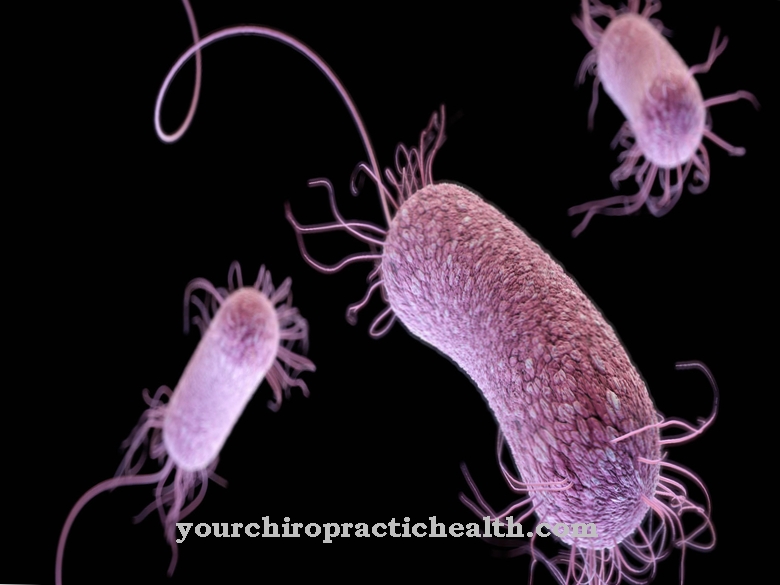Under Toxoplasma parasitic unicellular organisms whose ultimate host is cats. The only known representative of the toxoplasma is Toxoplasma gondii.
What are toxoplasmas?
Toxoplasmas are also called Toxoplasma gondii. So this species is the only species in the genus. The arched protozoon leads a parasitic way of life and uses cats as final hosts. Other mammals, birds or humans can also serve as intermediate hosts. The toxoplasmas are related to the Plasmodium, from which malaria is transmitted.
Toxoplasma gondii is able to multiply in human cells. Antibodies against toxoplasmas can be found in about a third of all people. However, unicellular disease such as toxoplasmosis rarely occurs. This infectious disease is generally considered to be harmless. However, there are risks for pregnant women, their unborn children and people with a weakened immune system.
Toxoplasma gondii was discovered as a parasite in 1907 in Tunisia. The discoverers of the unicellular organism, Manceaux and Nicolle, gave it the name Toxoplasma because of its special shape, which resembled a crescent moon.
However, toxoplasmas were only identified as a pathogen in humans many years later. In 1948 Albert Sabin (1906-1993) succeeded in developing a serological test, which was called the dye test and which worked with antibodies. This revealed the worldwide distribution of toxoplasmas in the human body. In Germany alone, Toxoplasma occurs in 50 percent of all German citizens. The likelihood of infection increases with age and is around 70 percent in people over 50.
Occurrence, Distribution & Properties
Toxoplasmas enter the human body, which is only an intermediate host, through infected meat. Contact with infected cat feces can also lead to infection. Toxoplasma gondii penetrates the organism orally and crosses the gastric passage. Finally, the parasite enters the intestinal wall via the digestive tract. From this point he has the opportunity to colonize other tissues or organs via the bloodstream or lymphatic system and to penetrate the body cells. This usually takes place in the central nervous system, muscles and parts of the immune system.
Following successful settlement, the toxoplasmas can multiply through asexual dichotomy. This leads to the formation of the trachyzoites. Since the defense system defends itself against the parasites, cysts often develop, which protect the unicellular organisms. The cysts show up primarily in the muscles of the heart and skeleton, in the eye retina, the brain and the wall of the uterus. In the cysts, in turn, there are thousands of individual parasites that can survive there without harm. They do not cause health problems.
Sexual reproduction of Toxoplasmas is only possible in the intestines of cats or similar animals, which are the ultimate host of the parasites. During this process, oocysts (parasite eggs) are formed, which spread through cat feces. The oocysts can develop further within two to four days and thus become infectious for other animals and humans. This condition lasts for several months. If the environment is humid, the risk of infection is up to five years.
The average size of the oocyst is around 11 micrometers. The oocysts contain two sporocysts and four sporozoites each. The parasites survive frost well, but heat is less beneficial for them. The sporocysts then hatch in an intermediate host.
It can be transmitted to humans through the consumption of raw or insufficiently heated minced meat that contains oocysts. Meat from game, pigs, goats and sheep as well as raw sausage is also considered risky. Toxoplasma can also be found in raw fruits and vegetables that have not been washed. Furthermore, humans can become infected with the pathogen through the cat excrement that occurs in the cat litter, in the garden or in a sandpit.
You can find your medication here
➔ Medicines to strengthen the defense and immune systemIllnesses & ailments
If Toxoplasma gondii penetrates the human organism, toxoplasmosis is possible. Most people get this infection. However, there are almost always no symptoms whatsoever. However, some people suffer from ailments similar to flu. These include joint and muscle pain, swollen lymph nodes, and a fever.
In rodents, the toxoplasmas even cause behavioral changes. For example, the infected animals are no longer naturally afraid of cat odor, which extends the life cycle of the parasites. Even after the Toxoplasma infection has cured, mice are no longer afraid of cat smell. Any changes in behavior caused by toxoplasmas are also under discussion in humans.
Infection with Toxoplasma gondii is considered risky for pregnant women. This is especially true if it is an initial infection that leads to a disruption in the development of the unborn child. In Germany, the congenital form of toxoplasmosis even has to be reported. In order to avoid infection with toxoplasma, it is advisable for pregnant women not to consume meat that is insufficiently cooked. Gardening and contact with litter boxes should also be avoided and hands should be washed regularly before meals.
Toxoplasmas can be effectively combated during pregnancy with antibiotics. A combination of sulfonamides or spiramycin with pyrimethamine is considered helpful, which kills the parasites. There is currently no approved vaccination against toxoplasma.



























